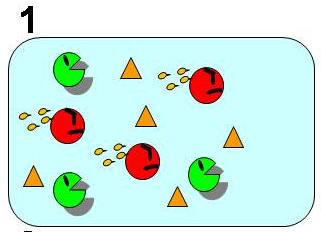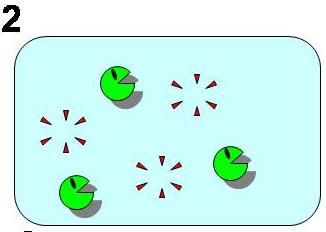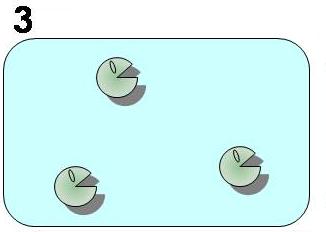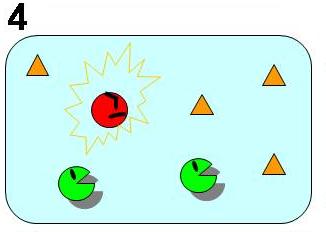Talk:Tokyo/Model
From 2007.igem.org
(Difference between revisions)
(→E.coli Follows Pareto's principle!) |
|||
| Line 1: | Line 1: | ||
==E.coli Follows Pareto's principle! == | ==E.coli Follows Pareto's principle! == | ||
| - | ''' To follow Pareto’s principle | + | ''' To follow Pareto’s principle found in an [[Tokyo/Concepts|ant society]], our model system must satisfy the three conditions shown in Fig. 1 to 4. In our model, all individual cells have the same genetic circuits but take either of state A (worker) or B (idler) depending on the surrounding circumstances. They change their states as if they DIFFERENTIATE so that the ratio of the two cell states is well balanced. |
''' ([http://en.wikipedia.org/wiki/Pareto_principle What is Pareto's principle? (Wikipedia)]) | ''' ([http://en.wikipedia.org/wiki/Pareto_principle What is Pareto's principle? (Wikipedia)]) | ||
| Line 11: | Line 11: | ||
[[Image:2state.JPG|thumb|190px|'''Fig. 2 Condition 2. Removal of A''' <br>Now that A (worker) is removed, there is only B (idler) left.|center|left]] | [[Image:2state.JPG|thumb|190px|'''Fig. 2 Condition 2. Removal of A''' <br>Now that A (worker) is removed, there is only B (idler) left.|center|left]] | ||
| - | [[Image:3state.JPG|thumb|190px|'''Fig. 3 Condition 3. | + | [[Image:3state.JPG|thumb|190px|'''Fig. 3 Condition 3. Dedifferentiation of B''' <br>While after the removal of A (worker), B (idler) becomes unstable and ''dedifferentiates''.|center|left]] |
<!--Node B detects the removal of node A from the system and knows that there is only node B left.--> | <!--Node B detects the removal of node A from the system and knows that there is only node B left.--> | ||
| - | [[Image:4state.JPG|thumb|210px|'''Fig. 4 Condition 4. Balanced Redifferentiation''' <br>Some | + | [[Image:4state.JPG|thumb|210px|'''Fig. 4 Condition 4. Balanced Redifferentiation''' <br>Some Dedifferentiated cells ''redifferentiate'' into A (worker) while the others go back to B (idler). Then the system becomes stable again with the balanced ratio of A and B.|center|left]] |
<br> | <br> | ||
<!--[[Image:concepts.jpg]]--> | <!--[[Image:concepts.jpg]]--> | ||
Latest revision as of 18:43, 26 October 2007
E.coli Follows Pareto's principle!
To follow Pareto’s principle found in an ant society, our model system must satisfy the three conditions shown in Fig. 1 to 4. In our model, all individual cells have the same genetic circuits but take either of state A (worker) or B (idler) depending on the surrounding circumstances. They change their states as if they DIFFERENTIATE so that the ratio of the two cell states is well balanced. ([http://en.wikipedia.org/wiki/Pareto_principle What is Pareto's principle? (Wikipedia)])
As shown in Fig. 1, 2, 3, and 4, the condition of the system is changing as follows:
Bistable state ⇒ The removal of A (worker) ⇒ Unstable state with only B left ⇒ Balanced Redifferentiation of B (idlers)



